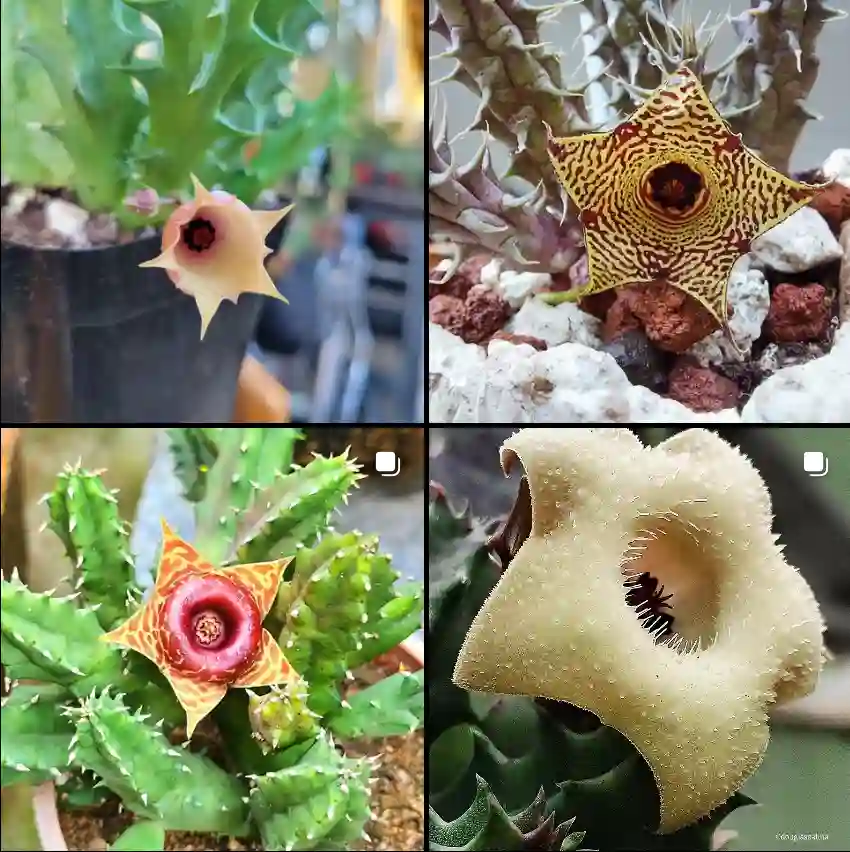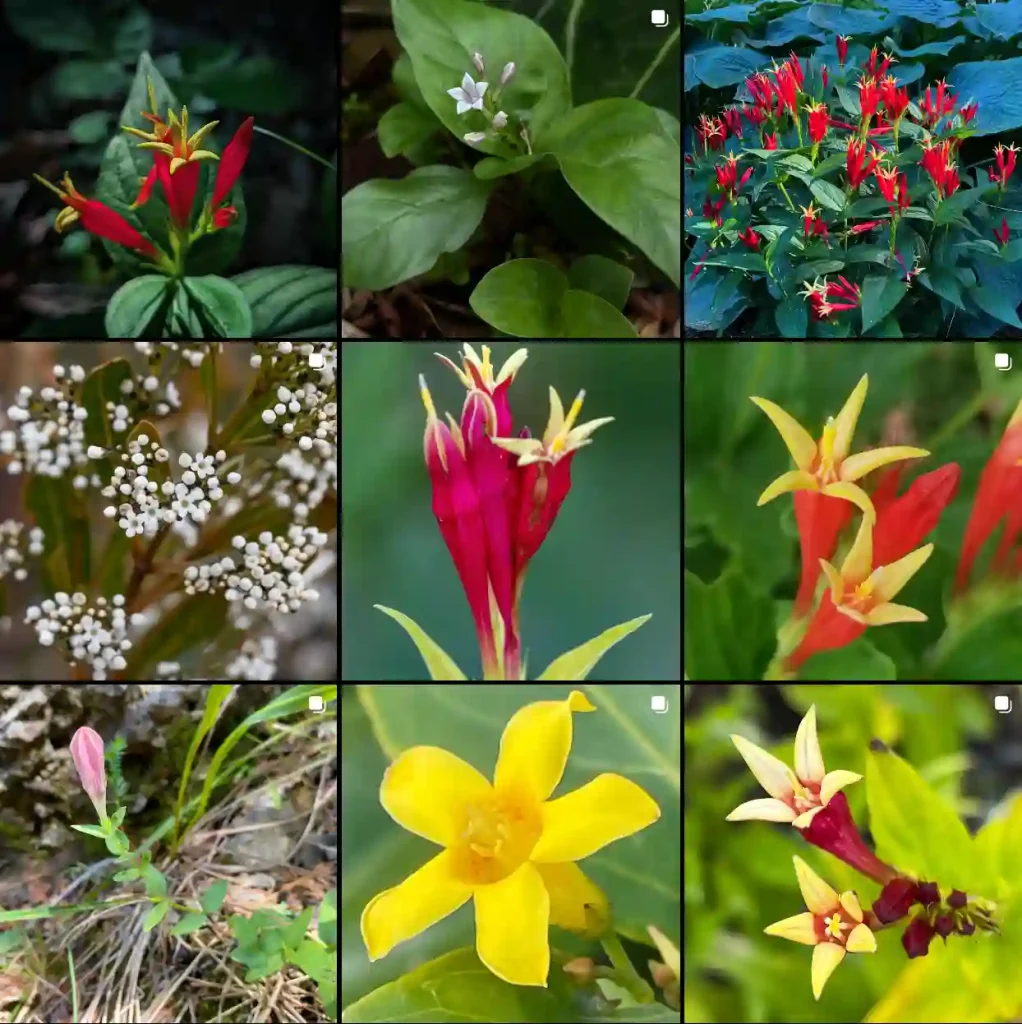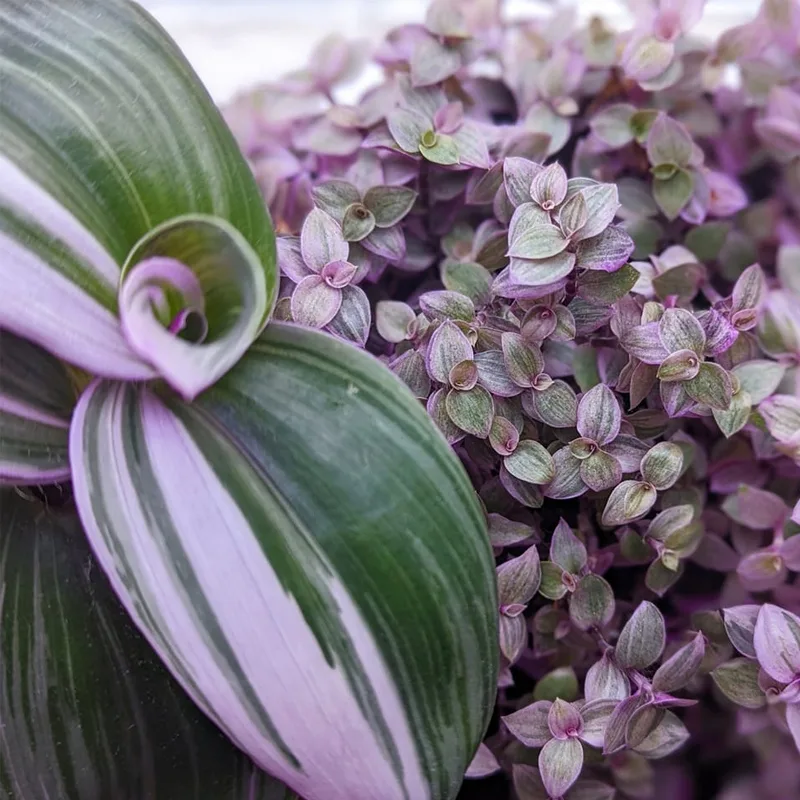Exploring the Isoetaceae Family: A Journey with Isoetes
As a plant enthusiast, I often find myself captivated by the diversity of life that exists within the plant kingdom. One family that has particularly piqued my interest is the Isoetaceae, a unique family of aquatic and semi-aquatic plants. This family, often overshadowed by more common flora, offers a fascinating glimpse into the evolutionary adaptations of plants. In this article, I will delve into the characteristics, habitats, and importance of the Isoetaceae family, specifically focusing on the genus Isoetes.
What Is the Isoetaceae Family?
The Isoetaceae family, commonly known as the quillwort family, comprises plants that thrive in freshwater environments, particularly in marshy areas, lakes, and ponds. These plants are distinguished by their unique structure, which often resembles a tuft of grass. The genus Isoetes, the sole genus within this family, showcases a remarkable evolutionary strategy that allows it to survive in diverse aquatic habitats.
Isoetes species are often submerged or partially submerged, with their long, slender leaves extending above the water surface. They are adapted to low-light conditions, making them well-suited for their aquatic lifestyles. In addition to their aesthetic appeal, these plants play a vital role in maintaining the health of their ecosystems by stabilizing sediment and providing habitats for various aquatic organisms.
Characteristics of Isoetes
Isoetes species are fascinating due to their distinct morphological and reproductive features. The leaves of these plants are typically long and strap-like, with a quill-like appearance, which is how they earn their common name. They grow from a subterranean corm, a storage organ that allows them to survive adverse conditions.
One of the most intriguing aspects of Isoetes is their reproductive strategy. These plants are heterosporous, meaning they produce two different types of spores: microspores and megaspores. The microspores develop into male gametophytes, while the megaspores develop into female gametophytes. This duality in reproduction is relatively rare among plants and showcases the evolutionary adaptations that Isoetes has developed to thrive in its environment.
Isoetes species
- Isoetes abyssinica Chiov.
- Isoetes aemulans J.P.Roux
- Isoetes aequinoctialis Welw. ex A.Braun
- Isoetes afloramientorum D.F.Brunt. & J.B.S.Pereira
- Isoetes alcalophila S.Halloy
- Isoetes alpina Kirk
- Isoetes alstonii C.F.Reed & Verdc.
- Isoetes × altonharvillii Musselman
- Isoetes amazonica A.Braun
- Isoetes anamariae J.B.S.Pereira
- Isoetes anatolica Prada & Rolleri
- Isoetes andicola (Amstutz) L.D.Gómez
- Isoetes andina Spruce ex Hook.
- Isoetes × angeloi D.F.Brunt. & K.L.McIntosh
- Isoetes appalachiana D.F.Brunt. & D.M.Britton
- Isoetes araucaniana Macluf & Hickey
- Isoetes asiatica (Makino) Makino
- Isoetes attenuata C.R.Marsden & Chinnock
- Isoetes australis S.Williams
- Isoetes azorica Durieu
- Isoetes baculata Hickey & H.P.Fuchs
- Isoetes baodongii Y.F.Gu, Y.H.Yan & Yi Jun Lu
- Isoetes biafrana Alston
- Isoetes bischlerae H.P.Fuchs
- Isoetes × blondeaui D.F.Brunt. & P.C.Sokoloff
- Isoetes bolanderi Engelm.
- Isoetes boliviensis U.Weber
- Isoetes boomii Luebke
- Isoetes boryana Durieu
- Isoetes boyacensis H.P.Fuchs
- Isoetes bradei Herter
- Isoetes brasiliensis H.P.Fuchs
- Isoetes brevicula E.R.L.Johnson
- Isoetes × brittonii D.F.Brunt. & W.C.Taylor
- Isoetes × brochonii Motelay
- Isoetes × bruntonii Knepper & Musselman
- Isoetes butleri Engelm.
- Isoetes cangae J.B.S.Pereira, Salino & Stützel
- Isoetes caparaoensis J.B.S.Pereira
- Isoetes capensis A.V.Duthie
- Isoetes × carltaylorii Musselman
- Isoetes caroli E.R.L.Johnson
- Isoetes chubutiana Hickey, Macluf & W.C.Taylor
- Isoetes cipoensis J.B.S.Pereira
- Isoetes coromandelina L.f.
- Isoetes creussensis Lazare & S.Riba
- Isoetes cristata C.R.Marsden & Chinnock
- Isoetes cubana Engelm. ex Baker
- Isoetes delalandei J.Lloyd
- Isoetes delilei Rothm.
- Isoetes dispora Hickey
- Isoetes dixitii Shende
- Isoetes × dodgei A.A.Eaton
- Isoetes drummondii A.Braun
- Isoetes dubsii J.B.S.Pereira
- Isoetes durieui Bory
- Isoetes × eatonii R.Dodge
- Isoetes echinospora Durieu
- Isoetes × echtuckerii D.F.Brunt. & D.M.Britton
- Isoetes ecuadoriensis Aspl.
- Isoetes ekmanii U.Weber
- Isoetes elatior A.Braun
- Isoetes eludens J.P.Roux, Hopper & Rhian J.Sm.
- Isoetes engelmannii A.Braun
- Isoetes escondidensis S.Halloy
- Isoetes eshbaughii Hickey & H.P.Fuchs
- Isoetes × fairbrothersii J.D.Montgom. & W.C.Taylor
- Isoetes fengii Y.F.Gu & Y.H.Yan
- Isoetes × fernaldii D.F.Brunt. & P.C.Sokoloff
- Isoetes flaccida Shuttlew. ex A.Braun
- Isoetes fluitans M.I.Romero
- Isoetes × foveolata A.A.Eaton
- Isoetes fuliginosa R.L.Small & Hickey
- Isoetes fuscomarginata H.P.Fuchs
- Isoetes gardneriana Kunze ex A.Braun
- Isoetes georgiana Luebke
- Isoetes giessii Launert
- Isoetes gigantea U.Weber
- Isoetes × gopalkrishnae S.K.Singh, P.K.Shukla & N.K.Dubey
- Isoetes graniticola D.F.Brunt.
- Isoetes gunnii A.Braun
- Isoetes gymnocarpa (Gennari) A.Braun
- Isoetes habbemensis Alston
- Isoetes hallasanensis H.K.Choi, Ch.Kim & J.Jung
- Isoetes hallei Eb.Fisch. & Lobin
- Isoetes harleyi J.B.S.Pereira
- Isoetes × harveyi A.A.Eaton
- Isoetes haussknechtii Troìa & Greuter
- Isoetes hawaiiensis W.C.Taylor & W.H.Wagner
- Isoetes heldreichii Wettst.
- Isoetes hemivelata R.L.Small & Hickey
- Isoetes × herb-wagneri W.C.Taylor
- Isoetes herzogii U.Weber
- Isoetes hewitsonii Hickey
- Isoetes × hickeyi W.C.Taylor & Luebke
- Isoetes hieronymi U.Weber
- Isoetes histrix Bory
- Isoetes hopei J.R.Croft
- Isoetes howellii Engelm.
- Isoetes humilior F.Muell. ex A.Braun
- Isoetes hyemalis D.F.Brunt.
- Isoetes hypsophila Hand.-Mazz.
- Isoetes inflata E.R.L.Johnson
- Isoetes jaegeri Pitot
- Isoetes jamaicensis Hickey
- Isoetes japonica A.Braun
- Isoetes jarmaniae D.F.Brunt., Kantvilas & M.Garrett
- Isoetes × jeffreyi D.M.Britton & D.F.Brunt.
- Isoetes × jermyi D.F.Brunt. & Rumsey
- Isoetes junciformis D.F.Brunt. & D.M.Britton
- Isoetes × kareniae D.F.Brunt. & P.C.Sokoloff
- Isoetes karstenii A.Braun
- Isoetes kashyapii M.Patel, M.N.Reddy & H.K.Goswami
- Isoetes killipii C.V.Morton
- Isoetes kirkii A.Braun
- Isoetes labri-draconis N.R.Crouch
- Isoetes lacustris L.
- Isoetes laosiensis C.Kim & H.K.Choi
- Isoetes laurentiana D.F.Brunt.
- Isoetes lechleri Mett.
- Isoetes libanotica Musselman, Bolin & R.D.Bray
- Isoetes lithophila N.Pfeiff.
- Isoetes longifolia J.B.S.Pereira
- Isoetes longissima Bory
- Isoetes longpingii Y.H.Yan, Y.F.Gu & J.P.Shu
- Isoetes louisianensis Thieret
- Isoetes luetzelburgii U.Weber
- Isoetes macrospora Durieu
- Isoetes malinverniana Ces. & De Not.
- Isoetes × marensis D.M.Britton & D.F.Brunt.
- Isoetes maritima Underw.
- Isoetes martii A.Braun ex Kuhn
- Isoetes mattaponica Musselman & W.C.Taylor
- Isoetes maxima Hickey, Macluf & Link-Pérez
- Isoetes melanopoda J.Gay & Durieu
- Isoetes melanospora Engelm.
- Isoetes melanotheca Alston
- Isoetes mexicana Underw.
- Isoetes × michinokuana M.Takamiya, Mits.Watan. & K.Ono
- Isoetes microvela D.F.Brunt.
- Isoetes minima A.A.Eaton
- Isoetes mississippiensis S.W.Leonard, W.C.Taylor, Musselman & R.D.Bray
- Isoetes mongerensis E.R.L.Johnson
- Isoetes mourabaptistae J.B.S.Pereira, P.G.Windisch, Lorscheitt. & Labiak
- Isoetes muelleri A.Braun
- Isoetes naipiana P.G.Windisch, Lorscheitt. & Nervo
- Isoetes nana J.B.S.Pereira
- Isoetes neoguineensis Baker
- Isoetes nigritiana A.Braun
- Isoetes nigroreticulata Verdc.
- Isoetes × novae-angliae D.F.Brunt. & D.M.Britton
- Isoetes novogranadensis H.P.Fuchs
- Isoetes nuttallii A.Braun ex Engelm.
- Isoetes occidentalis L.F.Hend.
- Isoetes olympica A.Br.
- Isoetes orcuttii A.A.Eaton
- Isoetes organensis U.Weber
- Isoetes orientalis Hong Liu & Q.F.Wang
- Isoetes ovata N.Pfeiff.
- Isoetes pallida Hickey
- Isoetes palmeri H.P.Fuchs
- Isoetes panamensis Maxon & C.V.Morton
- Isoetes × paratunica D.F.Brunt., Mochalova & A.A.Bobrov
- Isoetes parvula Hickey
- Isoetes pedersenii H.P.Fuchs ex E.I.Meza & Macluf
- Isoetes perralderiana Durieu & Letourn. ex Milde
- Isoetes perrieriana Iversen
- Isoetes philippinensis Merr. & L.M.Perry
- Isoetes phrygia (Boiss.) Hausskn.
- Isoetes pichisermollii Eb.Fisch. & Lobin
- Isoetes piedmontana (N.Pfeiff.) C.F.Reed
- Isoetes pirinica D.F.Brunt. & D.Ivanova
- Isoetes pitotii Alston
- Isoetes precocia R.L.Small & Hickey
- Isoetes pringlei Underw.
- Isoetes prototypus D.M.Britton & Goltz
- Isoetes pseudojaponica M.Takamiya, Mits.Watan. & K.Ono
- Isoetes × pseudotruncata D.M.Britton & D.F.Brunt.
- Isoetes pusilla C.R.Marsden & Chinnock
- Isoetes quiririensis J.B.S.Pereira & Labiak
- Isoetes ramboi Herter
- Isoetes riparia Engelm. ex A.Braun
- Isoetes rwandensis Eb.Fisch. & Lobin
- Isoetes sabatina Troìa & Azzella
- Isoetes sahyadrii Mahab.
- Isoetes santacruzensis J.B.S.Pereira
- Isoetes saracochensis Hickey
- Isoetes savatieri Franch.
- Isoetes schweinfurthii A.Br.
- Isoetes sehnemii H.P.Fuchs
- Isoetes septentrionalis D.F.Brunt.
- Isoetes serracarajensis J.B.S.Pereira, Salino & Stützel
- Isoetes setacea Lam.
- Isoetes shangrilaensis Xiang Li, Yuqian Huang, X.Dai & Xing Liu
- Isoetes sinensis T.C.Palmer
- Isoetes smithii H.P.Fuchs
- Isoetes spannagelii H.P.Fuchs
- Isoetes spinulospora C.Jermy & Schelpe
- Isoetes stellenbossiensis A.V.Duthie
- Isoetes stephanseniae A.V.Duthie
- Isoetes stevensii J.R.Croft
- Isoetes storkii T.C.Palmer
- Isoetes taiwanensis De Vol
- Isoetes tamaulipana Mora-Olivo, A.Mend. & Mart.-Aval.
- Isoetes tegetiformans Rury
- Isoetes tenella (Léman) Desv.
- Isoetes tennesseensis Luebke & Budke
- Isoetes tenuifolia Jermy
- Isoetes tenuissima Boreau
- Isoetes texana Singhurst, Rushing & W.C.Holmes
- Isoetes tiguliana Gennari
- Isoetes todaroana Troìa & Raimondo
- Isoetes toximontana Musselman & J.P.Roux
- Isoetes transvaalensis C.Jermy & Schelpe
- Isoetes triangula U.Weber
- Isoetes tripus A.Braun
- Isoetes truncata (A.A.Eaton) Clute
- Isoetes tuckermanii A.Braun ex Engelm.
- Isoetes tuerckheimii Brause
- Isoetes udupiensis P.K.Shukla, G.K.Srivast., S.K.Shukla & P.K.Rajagopal
- Isoetes ulei U.Weber
- Isoetes valida Clute
- Isoetes vanensis M.Keskin & G.Zare
- Isoetes vermiculata Hickey
- Isoetes viridimontana M.A.Rosenthal & W.C.Taylor
- Isoetes weberi Herter
- Isoetes welwitschii A.Braun ex Kuhn
- Isoetes wormaldii Sim
- Isoetes xiangfei Y.H.Yan, Y.F.Gu & J.P.Shu
- Isoetes yunguiensis Q.F.Wang & W.C.Taylor
Habitat and Distribution
Isoetes can be found in various freshwater habitats across the globe, from North America to Europe and Asia. They tend to prefer shallow waters where sunlight can penetrate, allowing for photosynthesis. The ability of these plants to adapt to fluctuating water levels is critical for their survival. They often grow in temporary ponds or marshes that may dry up during certain seasons, demonstrating resilience and adaptability.
During my explorations, I’ve noticed that Isoetes often forms dense mats in these aquatic environments. These mats not only provide a habitat for fish and invertebrates but also contribute to the overall health of the aquatic ecosystem. By stabilizing sediment, they help prevent erosion and maintain water quality, which is vital for the organisms living in these habitats.
Ecological Importance of Isoetes
The ecological significance of Isoetes cannot be overstated. As a group of plants that thrive in fragile aquatic ecosystems, they serve as indicators of environmental health. Their presence can signal a balanced ecosystem, while their decline may indicate problems such as pollution or habitat destruction.
Additionally, Isoetes plays a crucial role in nutrient cycling within aquatic systems. By capturing sunlight and converting it into energy, they contribute to the base of the food web, supporting various aquatic life forms. Their corms and leaves also provide a food source for herbivores, further integrating them into the ecosystem.
Conservation Challenges
Despite their ecological importance, Isoetes faces numerous threats. Habitat loss due to urbanization, pollution, and climate change significantly impacts their populations. Many species of Isoetes are considered vulnerable or endangered. Conservation efforts are essential to protect these unique plants and their habitats.
In my local area, I’ve participated in initiatives aimed at restoring aquatic habitats where Isoetes once thrived. It’s been rewarding to see communities come together to preserve these vital ecosystems. Education plays a significant role in these efforts, raising awareness about the importance of preserving not just Isoetes but the entire aquatic ecosystem.
Conclusion
The Isoetaceae family, with its sole genus Isoetes, holds a special place in my heart as a plant lover and conservationist. These remarkable plants exemplify the beauty and complexity of nature, adapting to their environments in ways that are both intricate and vital to ecosystem health. As I continue my journey exploring the plant kingdom, I am reminded of the importance of preserving these unique species and their habitats for future generations to enjoy.
In conclusion, the Isoetaceae family represents not just a group of plants but a vital component of aquatic ecosystems. Understanding and protecting Isoetes can help us ensure the health and sustainability of our planet’s precious natural resources. I encourage everyone to explore the world of Isoetaceae and appreciate the beauty and significance of these incredible plants.
If i die, water my plants!



